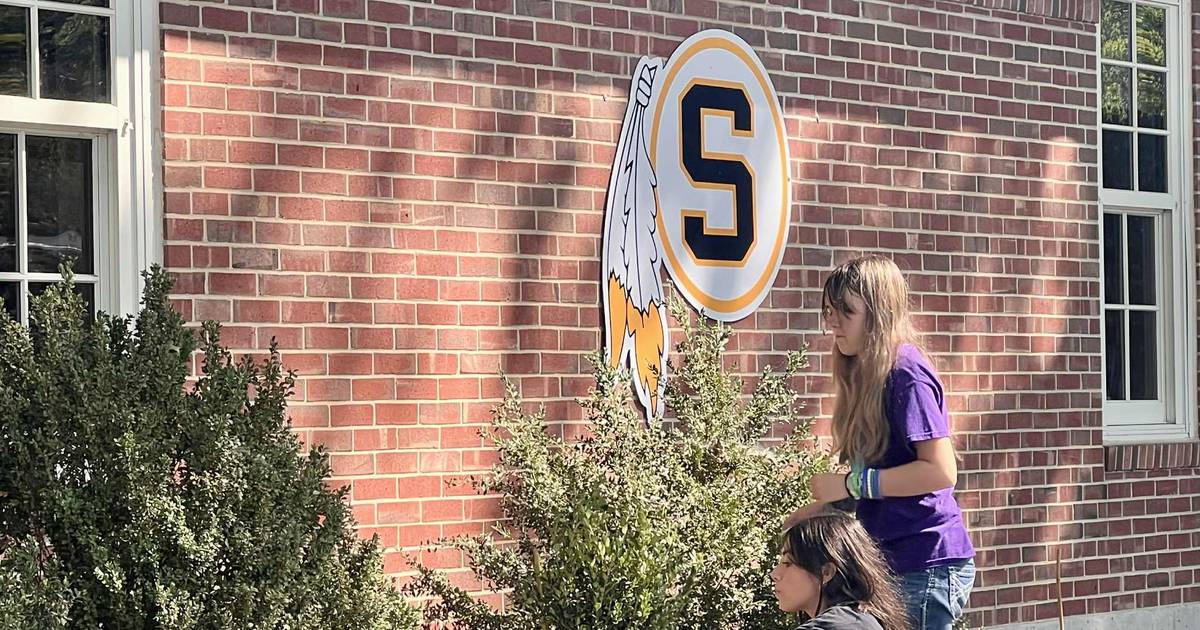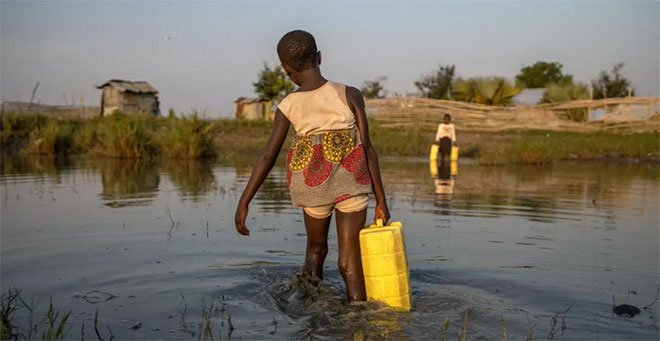
At Sterling High School, students in the agriculture program are not just learning about crops and machinery. They are gaining hands-on experience with animals and plants, building skills that could shape future careers or even help them manage their own gardens and pets.
Teachers Megan Stanley and Taylor Irvin lead the school’s horticulture and animal science classes, offering students a mix of classroom instruction and practical projects. In animal science, students study things from domestication history to veterinary techniques such as bandaging, administering vaccines and preventive care. Horticulture classes cover plant physiology, soil health, landscaping and floral design, giving students industry knowledge and real-world skills they can use at home.
Animal science
Students begin Animal Science 1 with a general history of animals, including how people have used them over time and how those roles have evolved through domestication. Students also work on several projects throughout the semester, such as designing an animal-handling facility to scale and dissecting animals, before moving on to practical skills-related projects in Animal Science 2.
“We just started on animal issues and how that affects the ag industry,” Irvin said. “We’ll get into cells, body tissues and body systems, animal nutrition… just a broad overview of the different areas of animal science, and then that’ll lead directly into Animal Science 2, which is my vet science class.”
Animal Science 2 builds on that foundation, providing students with hands-on experience in technical veterinary skills, including bandaging and suturing wounds, changing dressings, preparing and administering vaccines, and other related procedures.
“We’ll eventually get into doing preventative care,” Irvin said. “So we’ll practice clipping dog nails. A lot of them have pets at home, and some people take their dog to a groomer to get that done, but we’ll talk about the proper way to do that, and then they’ll be able to practice those skills.”
Irvin said that while many people associate these skills primarily with careers as veterinarians, she encourages her students to explore a wide range of opportunities.
“There are also animal nutritionists, there are groomers … animal husbandry is a popular one. There are a lot of different areas,” Irvin said. “I’m trying to at least get them to know what opportunities are out there. What I like about this science is that some of the kids in here are more interested in the medical field for humans, but a lot of that overlaps, … so they’re still learning those practical skills.”
Horticulture
Stanley said her horticulture classes follow a similar format. Students begin with a general overview of several topics, including floral design, landscaping, plant physiology and more.
“We also talk about soil health, plant nutrition, greenhouses and their importance in the horticulture industry,” Stanley said. “We also do plant ID, just like they learn to identify different animals. By exposing students to different plants, when they’re out and about, they can easily identify which ones are annuals and which ones are perennials, and whether they’re good to use in floral design or landscaping.”
Horticulture 2 dives deeper into those processes, devoting an entire semester to floral design and another to landscape design. Stanley said the class does more than just prepare students for careers in these fields; it equips them with practical skills as homeowners, a benefit that has grown in relevance with the recent rise in homesteading.
“This way, when my students are like, ‘My fruit isn’t growing, or my plants aren’t producing, what could be the issue?’ Instead of them just giving up, they know how to do a soil test for nutrition, the plant’s basic requirements and how to tell if their soil is acidic or basic,” Stanley said. “They can work out some of those things by themselves before having to go to somebody else. It’s those basic skills that homeowners would need.”
Horticulture 1 students get plenty of hands-on practice through daily and weekly projects. In Horticulture 2, the first semester focuses on floral arrangements, giving students the chance to apply principles of design in creative ways.
“My students are working on candy bouquets right now,” Stanley said. “Instead of arranging with flowers, they’re arranging with candy. We are still practicing the same principles of design that you would with flowers. We do wreaths, pumpkin centerpieces, all those good things.”
The second semester shifts to landscape design, which combines creativity with real-world problem-solving. Previously, students created designs for made-up client profiles, but this year they will work with the district on actual projects.
“I was talking with Jason Austin, our principal, and we have some new facilities that we’re building districtwide that are going to need landscaping,” Stanley said. “So we’re going to be working with him and the district to design some landscaping for those same buildings that are going up.”
Stanley said the project will give students practical experience in planning, ordering materials and maintaining landscapes, skills they can use in future careers and as homeowners.
Students in horticulture and animal science also hear from guest speakers and visit businesses and organizations related to their studies, such as local veterinarians, orchards, botanical gardens, Kitzman’s Farm Sanctuary in Dixon, the Morton Arboretum in the Chicago suburbs and others.
“I bring in a landscape designer, and he is really into digital designs because nowadays, digital is everywhere,” Stanley said. “So he shows them how to do CAD designs online, and that kind of leads into my plant catalogs. I tell my students, ‘Somebody has to put these catalogs together, and if you’re really into digital design, photography, videography, you could be the person who’s making these.’”
Both teachers have noticed growing interest in their classes, with introductory-level courses often filling to capacity. They attribute this to the hands-on nature of the classes and the growing emphasis on Career and Technical Education.
“We are in a district that pushes college readiness, and that’s great, … but our students need to know that there are other pathways for them aside from college,” Stanley said. “There is a huge need in trade skills right now, and our students are realizing that. They can go into HVAC, but they can also go into plant breeding, landscape design, animal nutrition or whatever the case may be, and a lot of what we’re teaching them in our classes is easily funneled into one of those careers without them having to go to a four-year degree program.”



